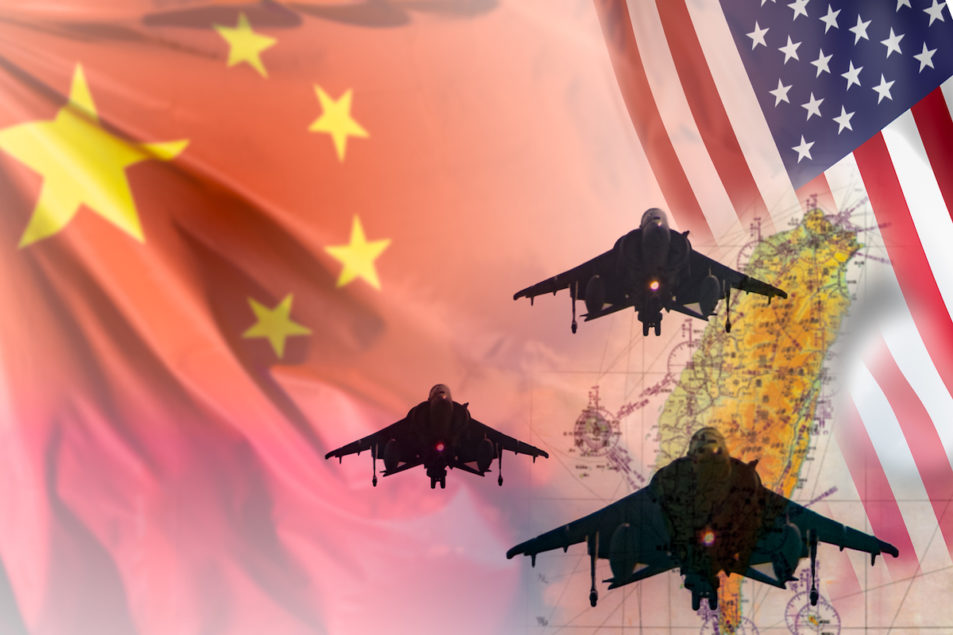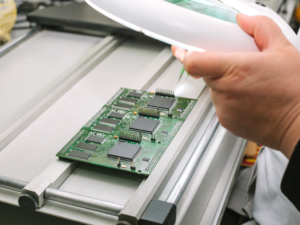
The alleged Chinese spy balloon that flew over the U.S. was capable of collecting communications signals and was part of a broader People’s Liberation Army intelligence-gathering effort that spanned more than 40 countries, a State Department official said.
High-resolution imagery provided by U-2 spy planes that flew past the balloon revealed an array of surveillance equipment that was inconsistent with Beijing’s claim that it was a weather device blown off course, the official said in a statement provided on condition of anonymity.
The statement, released before State and Defense Department officials appeared before Congress in open hearings and closed briefings on February 9, marks the fullest accounting yet for the Biden administration’s insistence over the course of a week-long drama that the balloon was meant to spy on the U.S..
Defense Secretary Lloyd Austin said in an interview with CBS News that the Pentagon acted to limit what the balloon could learn about U.S. nuclear capabilities.
“Certainly all of our strategic assets, we made sure were buttoned down and movement was limited and communications were limited so that we didn’t expose any capability unnecessarily,” Austin said. He said Chinese balloons flew over parts of the U.S. in previous years, passing over Texas and Florida.
Balloon’s Manufacturer
The U.S. is now trying to expose and counter broader Chinese spying efforts alongside allies, the State Department official said. It’s also looking at taking action against Chinese entities linked to the intelligence-gathering effort after identifying a Chinese balloon manufacturer that sells products to the Chinese military, according to the official.
The new details released on February 9, including the contention that the device was part of a broader military-directed fleet, will add to the strain on U.S.-China relations.
China refused a requested phone call between Austin and his Chinese counterpart, Defense Minister Wei Fenghe, right after the balloon was shot down off the coast of South Carolina on February 4, according to the Pentagon.
“Over the last several months, the PLA has continued to view the mil-mil relationship as something that they can turn on and off to express displeasure with other things that are happening,” Assistant Secretary of Defense Ely Ratner told the Senate Foreign Relations Committee, referring to the People’s Liberation Army’s military-to-military relationship with U.S. counterparts. “We think that’s really dangerous. We continue to have an outstretched hand.”
China’s Ministry of Defense said it declined to talk with the U.S. over the balloon because “the use of force violates international practice and sets a bad precedent,” according to a statement from spokesman Tan Kefei. “The U.S. hasn’t created a proper atmosphere for dialogue,” he added, calling the downing of what China considers a civilian balloon “irresponsible.”
The disclosure of the balloon in early February led to the postponement of Secretary of State Antony Blinken’s long-planned trip to China as part of an effort to normalize ties between the world’s two largest economies.
U.S. officials have said they took measures to nullify the balloon’s intelligence-gathering capacity as it traversed the continental U.S., but the new assertion that it was capable of actively gathering sensitive communications could fuel further Republican criticism that the Biden administration should have acted sooner to shoot down the balloon instead of waiting for it to cross the country so that it could be downed over water.
Congressional Reaction
The House unanimously voted to condemn China for the balloon flight even as lawmakers continued to split, largely along partisan lines, about whether the administration had acted properly.
After an administration briefing for House members, Representative Adam Schiff, a California Democrat, said, “They answered all the questions that we had. And I think that the administration made the right decision about shooting it down and when they chose to shoot it down. I think it would have posed a real risk to people on the ground.”
But Republican Susan Collins of Maine told a Senate hearing that “it defies belief that there was not a single opportunity to safely shoot down this spy balloon” as it crossed the country. “By the administration’s logic, we would allow the Chinese to fly a surveillance balloon over the Pentagon.”
Democratic Senator Jon Tester of Montana, where the balloon’s presence first became public, said it should have been shot down when it initially passed over Alaska. “I don’t want a balloon going over the United States,” he said.
Republican Senator Lisa Murkowski of Alaska said failing to do so sent a signal to China that it has “free range in Alaska” to “cruise over” her state “before it gets to more sensitive areas.”
Lieutenant General Douglas Sims, director of operations for the Joint Staff, responded that over Alaska, as elsewhere, the concern was for “near zero probability of collateral damage” on the ground. Melissa Dalton, assistant secretary of defense for homeland defense, added that salvage operations to probe the balloon’s capabilities would have been difficult and “very dangerous” in the deep and icy waters off of Alaska.
- SEO Powered Content & PR Distribution. Get Amplified Today.
- Platoblockchain. Web3 Metaverse Intelligence. Knowledge Amplified. Access Here.
- Source: https://www.supplychainbrain.com/articles/36618-chinas-balloon-was-capable-of-spying-on-communications-us-says
- 9
- a
- About
- According
- Accounting
- Action
- actively
- Adam
- added
- administration
- After
- against
- All
- alleged
- alongside
- and
- Anonymity
- appeared
- areas
- Army
- Array
- Assets
- Assistant
- Atmosphere
- austin
- Bad
- because
- before
- belief
- between
- biden
- Biden Administration
- Briefing
- broader
- california
- call
- calling
- capabilities
- capable
- Capacity
- China
- Chinas
- chinese
- chose
- claim
- closed
- Coast
- Collateral
- Collecting
- Collins
- committee
- Communications
- Concern
- condition
- Congress
- considers
- continental
- continue
- continued
- could
- Counter
- countries
- country
- course
- created
- criticism
- Cross
- Crossed
- Dangerous
- decision
- deep
- Defense
- Defense Department
- Democrat
- Department
- details
- device
- dialogue
- difficult
- Director
- disclosure
- Dont
- down
- Downing
- Drama
- Early
- economies
- effort
- efforts
- elsewhere
- entities
- equipment
- Even
- express
- February
- First
- FLEET
- flight
- florida
- Force
- foreign
- from
- Fuel
- further
- gathering
- General
- going
- Ground
- hearing
- homeland
- House
- HTTPS
- identifying
- in
- Including
- initially
- instead
- International
- Interview
- IT
- joint
- Joint Staff
- largely
- largest
- Last
- lawmakers
- LEARN
- Led
- LIMIT
- Limited
- lines
- linked
- looking
- made
- Maine
- Manufacturer
- measures
- Members
- Military
- ministry
- months
- more
- movement
- New
- news
- nuclear
- official
- open
- Operations
- Opportunity
- Other
- part
- parts
- passed
- Passing
- past
- pentagon
- People
- people’s
- phone
- Phone call
- Planes
- plato
- Plato Data Intelligence
- PlatoData
- practice
- Precedent
- presence
- previous
- probability
- probe
- Products
- proper
- properly
- provided
- public
- Questions
- range
- Ratner
- real
- relations
- relationship
- released
- representative
- Republican
- requested
- Revealed
- Risk
- safely
- Said
- says
- Schiff
- Sells
- Senate
- Senator
- sensitive
- Sets
- several
- Shoot
- shooting
- should
- Signal
- signals
- sims
- single
- So
- something
- South
- South carolina
- split
- spying
- Staff
- State
- State Department
- Statement
- States
- Strategic
- surveillance
- Susan
- taking
- Talk
- texas
- The
- the joint
- The State
- things
- Ties
- to
- trip
- TURN
- u.s.
- unanimously
- United
- United States
- unnecessarily
- use
- View
- voted
- Waiting
- Water
- Weather
- What
- whether
- will
- world’s
- would
- years
- zephyrnet
- zero












